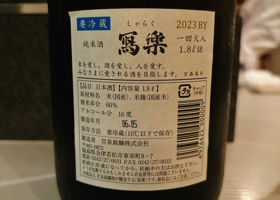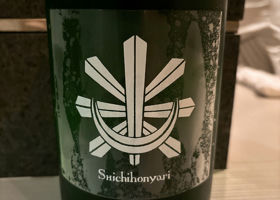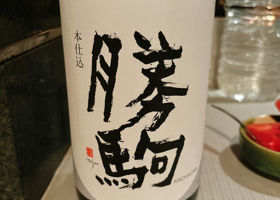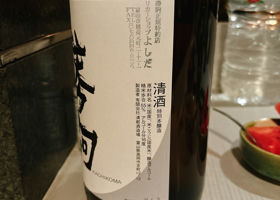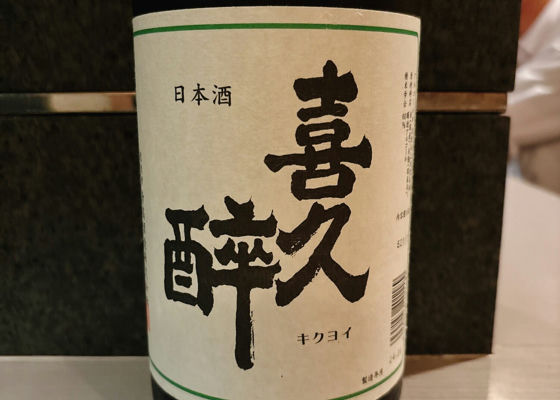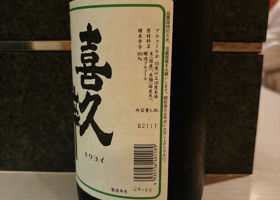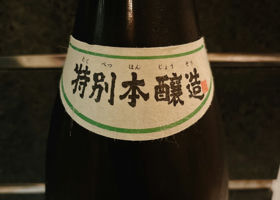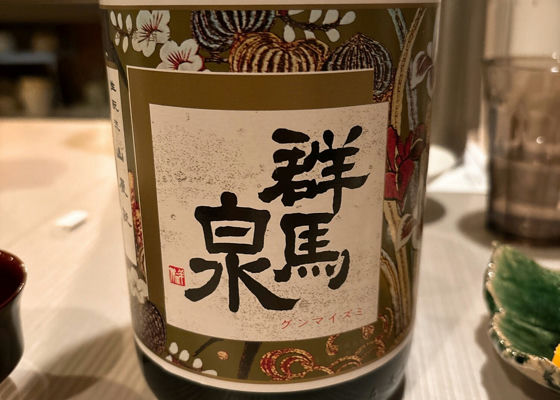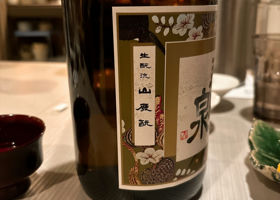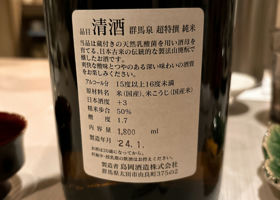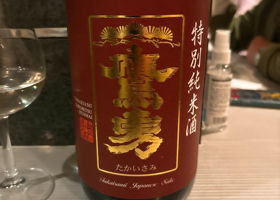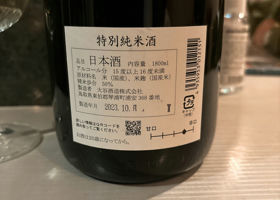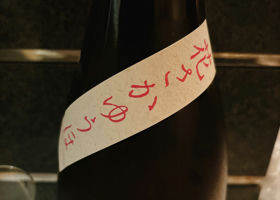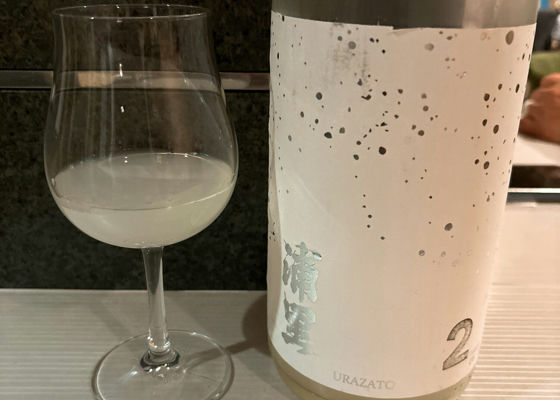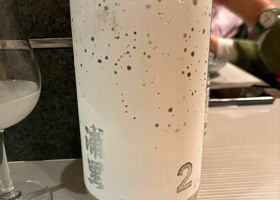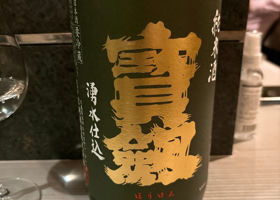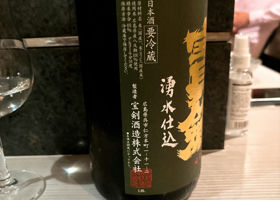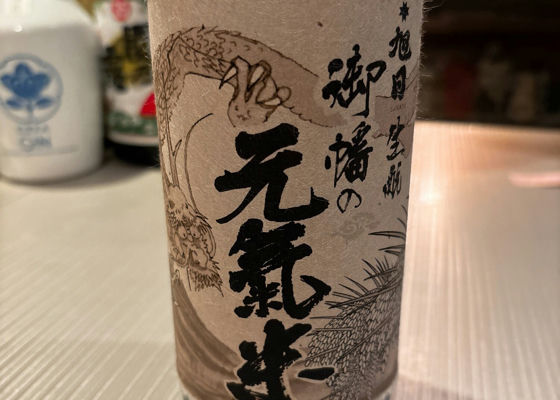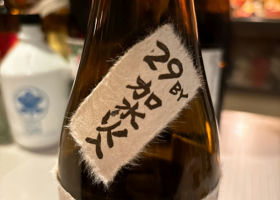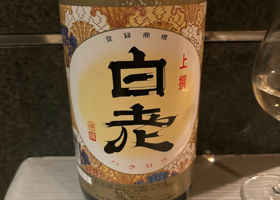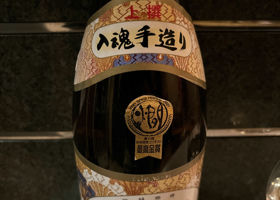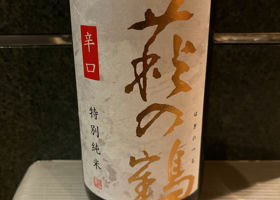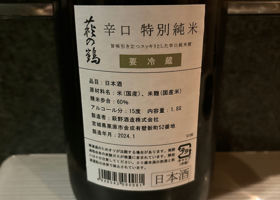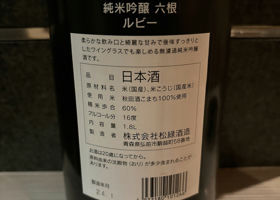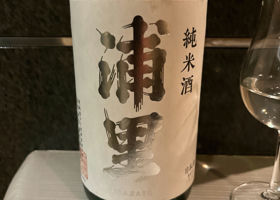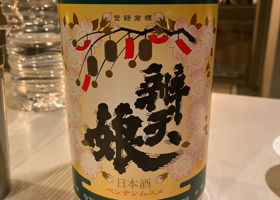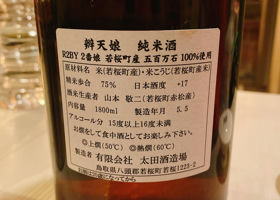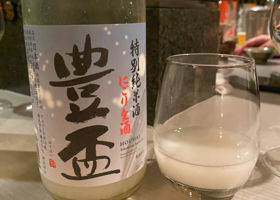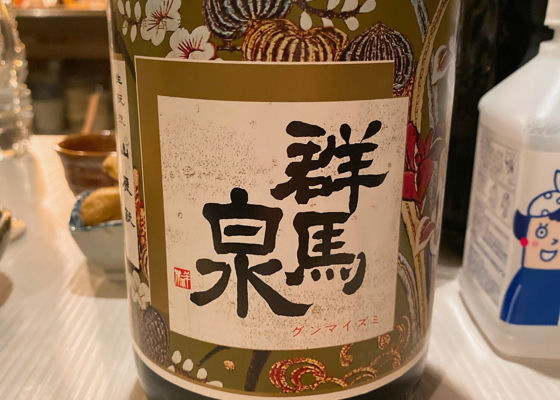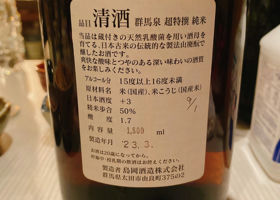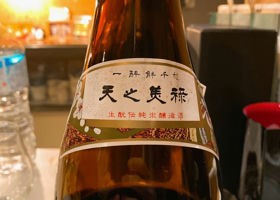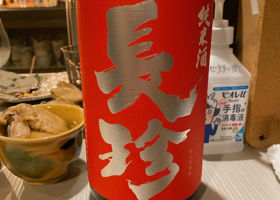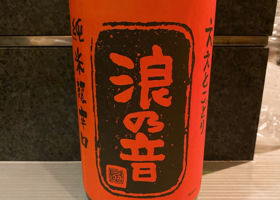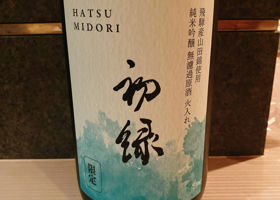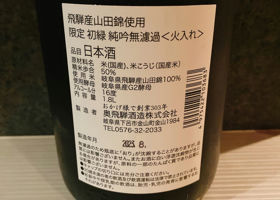Timeline
やす☆It has a once-fired, petit-fresh feeling, clear flavor and sharpness. やす☆This is the first Shichibonshari summer sake I've had.
It is a light, crisp, dry sake at 14 degrees Celsius. I would drink this sake more for its summery character than for its Shichibonspear character. やす☆It has a soft and full flavor at room temperature. Although it is alky, there is no sense of alcohol. やす☆It has been a long time since I have had Kikuso. It has a refreshing feeling of aluzoe and has a good sharpness. やす☆Heated. I don't have notes on this one either, but it seemed to have a soft umami and sharpness. やす☆At room temperature. I don't have notes, but it seemed to have a good flavor and sharpness. やす☆Tasted again on 5/4 at Yawaragi. At room temperature, it is crisp and acidic. When heated, the sweetness increases, but it does not expand as much and has a strong sense of sharpness. やす☆It is fresh and crisp with good umami and crisp acidity. やす☆Aroma with a hint of acidity. It is crisp and clean, with a hint of nigari grain and a crisp acidity. やす☆It has a sharp sharpness typical of Takarakken, but also has a full flavor. やす☆H29BY was served warm. It has a mildly matured feel, with a strong sense of sharpness accompanied by the acidity of the sake. やす☆Slightly alcoholic aroma. It has the crispness and sharpness of an arosozome, and although it is not special, it is an everyday drink that does not interfere with a meal.
Later, looking back at the photo, I realize it won the gold medal in the heated sake contest. It might have been better heated. やす☆This one is also refreshingly crisp. As the name suggests, it is dry. やす☆Clear and crisp, with strong acidity. やす☆First Urasato.
It has a clear, soft flavor and crisp sharpness, and seems to be good as a mid-meal drink. やす☆R2BY was served warm. It has a sense of maturity and a strong sharpness with acidity. やす☆Shuwa shuwa. Strong graininess due to the corkage. やす☆Warmed up, it has a full flavor and sharpness. Good balance. やす☆At room temperature, it has a moderate freshness and umami, and a sharpness that is typical of a sake with a sake strength of +9. When heated, the sharpness increases. やす☆At room temperature. It has a moderate umami taste, which quickly and sharply finishes without a moment's pause. It tastes like a super dry wine. やす☆It has a calm and clear flavor that is typical of hi-ire. It is moderately sweet and has a good sharpness, but it does not seem to have much character compared to the nama-zake. RecommendedContentsSectionView.title

